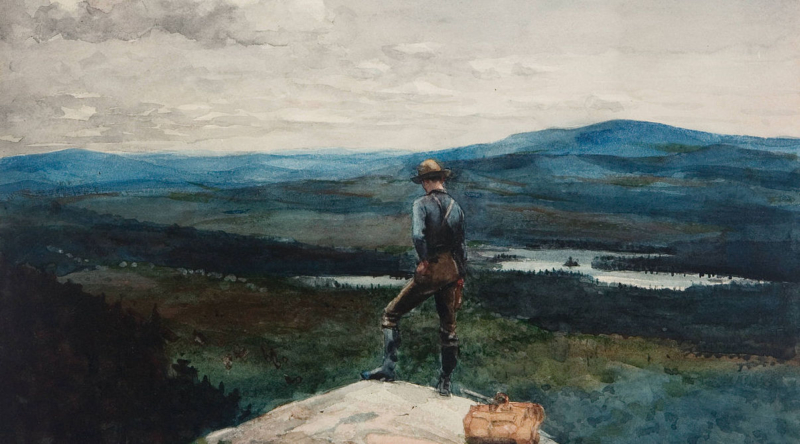On the back of most Jeeps you will find written “the mountains are calling and I must go.” John Muir’s famous words call us to flee to the mountains to encounter something beautiful, something true. But which mountains? Those towering and sound summits, wreathed in smoke? Or instead the fragile mountains of wishful thinking which, when shaken, crumble to the sea? The mountains of the romantic soar, but are without substance. And while faith can move mountains, it seems it is the role of the skeptic to leave them flattened. We desire to reach soaring heights with the romantic, while we fear foolhardiness with the skeptic. The mountains are calling, but we need something more than romance or skepticism if we are to prove and test these mountains, to come to know and love the fullness of truth.
Shortly before Christ’s words of assurance that the man of faith will move mountains (Matt 17:20), we see in Peter the romantic disciple. Faced with the glory of Christ on Mount Tabor, Peter would have set up tents and remained atop the mountain. Peter longs for this mountain peak, but faith in Christ requires something more; the glory of the Cross is atop the true peak of Calvary. Good-willed as it may be, the romantic’s sense of faith is more akin to wishful thinking. For the romantic disciple the crucifixion remains a stumbling block (1 Cor 1:23); it both defies his desires and proves them a false summit. The romantic desires reality as he would have it. He settles for something far less than what the truth has in store.
When romanticism proves itself thin, we are left wondering if anything remains at all. As wishful thinking becomes wistful doubt, the natural reaction may be the skeptic’s flattening of both true and false summits. For the reacting skeptic, the world has shown itself unreliable and, fearing deception, he rejects it all—save what he wants to keep. Like the romantic, the skeptic may be guided by good intentions, but his guidance is a map that fails to capture the fullness of truth. Compared to the mountains, the skeptic’s view of reality is a flattened waste.
We find sure guidance in navigating these false summits and flat wastes from our saint today, Albert the Great. Saint Albert has been given the title “Universal Doctor” not only for the breadth of his works but also for the exemplary way he sought the truth. In his 38 books on theology, philosophy, and natural science, St. Albert accepted many natural explanations, but was by no means a skeptic. Saint Albert didn’t simply study rocks and rivers, animals and angels; he studied creation. The study of creation recognizes a connection to the creator. The world is charged with meaning and is worth knowing in full, because it reveals the truth and goodness of God. What set St. Albert apart as the model student of truth was his unrelenting embrace of both faith and reason. His life of prayer was not opposed to his constant search for knowledge, since, as Benedict XVI observed, “all this contributes to fostering thirst for and love of God.”
John Muir’s oft abbreviated quote reads in full, “the mountains are calling and I must go and I will work on while I can, studying incessantly.” Muir, like St. Albert, recognized that the search for truth needs something more than the allure of the call. When the fragile mountains of the romantic crumble, reason provides ready support. Where skepticism flattens the mountains to its own image, faith enlightens and brings us to the summits of revelation. Faith and reason are the two wings on which man rises to the contemplation of truth (see Fides et Ratio). Faith shines light on what is not yet known, grounding us and freeing us to approach with surety that which is beyond knowledge (cf. Eph 3:17–19). There, in the real mountains, we are freed to delight in truth. Mountains are raised, which doubt had brought low. They are made firm in reason and brilliant in faith.
✠
Image: Winslow Homer, The Ranger, Adirondacks







